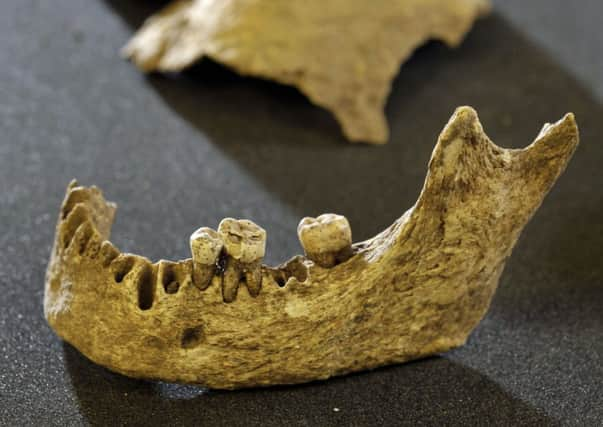East Lothian skeleton ‘may be that of Viking King’


The bones, along with a belt like those known to be worn in viking circles in Ireland during the period, were found during a dig at Auldhame near North Berwick in 2005.
It is thought the young male adult may have spent time in the household of Olaf Guthfrithsson, who ruled as King of Dublin and Northumbria from 934 to 941, or may even be the King himself.
Advertisement
Hide AdAdvertisement
Hide AdDr Alex Woolf, senior lecturer in the School of History at the University of St Andrews, and a historical consultant on the project said: “Whilst there is no way to prove the identity of the young man buried at Auldhame, the date of the burial and the equipment make it very likely that this death was connected with Olaf’s attack on the locale.
“Since we have a single furnished burial in what was probably perceived as St Balthere’s original foundation there is a strong likelihood that the king’s followers hoped that by burying him in the saint’s cemetery he might have benefitted from some sort of post-mortem penance.”
The belt and other artefacts suggest the body was that of a man who spent time in the household of the kings of the Uí Ímar dynasty, which dominated both sides of the Irish Sea from about 917 until at least the middle of the 10th century.
Uí Ímar member Guthfrithsson ransacked Auldhame and nearby Tyninghame - two churches dedicated to Saint Balthere - shortly before he passed away in 941, leading to suggestions that his body may be the one found in East Lothian nine years ago.
Fiona Hyslop, Cabinet Secretary for Culture and External Affairs said: “This is a fascinating discovery and it’s tantalising that there has been the suggestion that this might be the body of a 10th century Irish Viking king.
“Scotland and Ireland’s archaeological communities enjoy a close working partnership, and this find and subsequent research is of particular interest to both, further emphasising the myriad ways in which the two countries’ histories are entwined.”
The hypothesis will be published next year in a Society of Antiquaries of Scotland book, funded by Historic Scotland.
Hyslop today visited Newgrange, a Neolithic monument in County Meath, to highlight archaeological links between Scotland and Ireland.
A seminar will take place at Edinburgh Castle on 30 October to look at archaeological collaboration between Scotland, Northern Ireland and the Republic of Ireland.